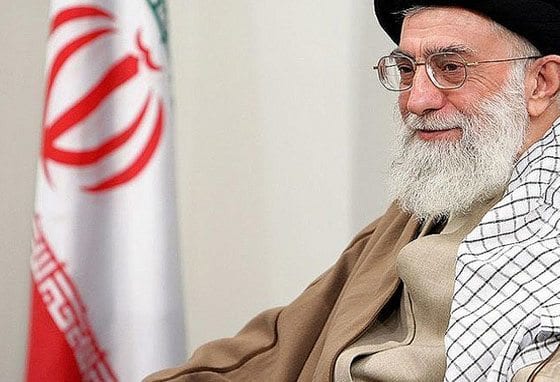
Six decades of Iranian nuclear development
Ayatollah Khamenei Endorses Iran Deal
This Wednesday Ayatollah Khamenei, the supreme leader of Iran, declared his support for the Iran deal. However it is with the condition that all sanctions must be lifted or Iran will refuse to cooperate.
Ayatollah Khamenei’s announcement also pointed to flaws in the Iran Deal and harshly criticized the Obama Administration. The ayatollah emphasized “ambiguities” and “structural weaknesses” of the deal which may weaken Iran and also that the United States could not be trusted.
The rhetoric is a mechanism for the leader to maintain a clear balance between the moderate government led by President Rouhani and the more extreme Islamic Revolutionary Guard Corps. Should the ayatollah appear too welcoming of the deal, he would alienate the IRGC. However should the ayatollah push hard against the Iranian deal, he could make the deal fall through and let Iran continue to be crippled by sanctions.
A Washington Times/ABC News Poll appeared to show 45% of Americans support the Iran deal while 44% are opposed to it and 11% are unsure. Despite the media frenzy on the Iran Deal few Americans actually understand and know the background on the deal or details of the deal itself.
You will also read: US nuclear deal with Iran
A Brief Overview of the Iranian Nuclear Program
In 1957, Iran then under a Western friendly monarchy, was a participant in one of President Eisenhower’s developmental projects called ‘Atoms for Peace’ where nuclear research and materials were provided for participating countries. This program laid the foundation for Iranian nuclear development.
In 1967 the United States provided Iran with a small nuclear reactor that used enriched uranium and produced about 600 grams of plutonium per year. Shah Pahlavi, then ruler of Iran, ordered the construction of 20 nuclear reactors and worked with MIT to provide scientific and technological training to Iranians.
After the Iranian Revolution in 1979, the United States ended nuclear cooperation with Iran. However Iran still received resources and technology from other sources such as Russia and China.
China, not a part of the Nuclear Nonproliferation Treaty in 1991, provided Iran with a large quantity of uranium materials along with key chemicals and technology to separate plutonium. Russia helped Iran build the Arak Heavy Water Reactor, which produces weapon grade plutonium. AQ Khan, a Pakistani scientist trained in the West also stole plans for a more efficient design for nuclear weapons development along with blueprints to build centrifuges. Centrifuges are used for uranium enrichment.
Jump to 2010, then Iranian President Ahmadinejad declared Iran to be a nuclear state and the capacity to develop nuclear weapons if they wanted to. This provoked harsh sanctions by the global community, spearheaded by then Secretary of State Hillary Clinton.
In 2011, Stuxnet, a virus program posing as a OS patch, destroyed thousands of centrifuges by making them spin out of sync.
The election of current President Rouhani led to negotiations for a ‘joint plan of action’ in response to the sanctions that crippled the Iranian economy. Those negotiations materialized as the Iran Deal.
Key Elements of the Nuclear Deal
A key component as negotiated by Iran, P5+1, and the EU would be that Iran reduce their number of centrifuges from almost 20,000 to about 6,000 which would increase the time Iran needs to develop a bomb from 2-3 months to about a year. Iran would also need to reduce their enriched uranium stockpile by 98 percent. These requirements would last for 15 years.
Inspections would take place to calculate the amount of uranium that is mined and inspectors are allowed accessed to any requested location within 24 days. Iran would also have to provide information on Iran’s weaponization program in the past. The inspections regime would last 25 years.
Under these circumstances, Iran would have to build a whole new covert nuclear weapons program which is made difficult given the established inspections regime. Though the restrictions taper off, Iran is never allowed to possess nuclear weapons.
Even if Iran decides to restart their nuclear weapons program, the global community would be vigilant in stopping Iran. However with the deal, Iran is given clear incentives to avoid attaining nuclear weapons. Without the deal, Israel would have bombed the Iranian facilities and probably trigger a war. With the deal there is a chance for peace.












